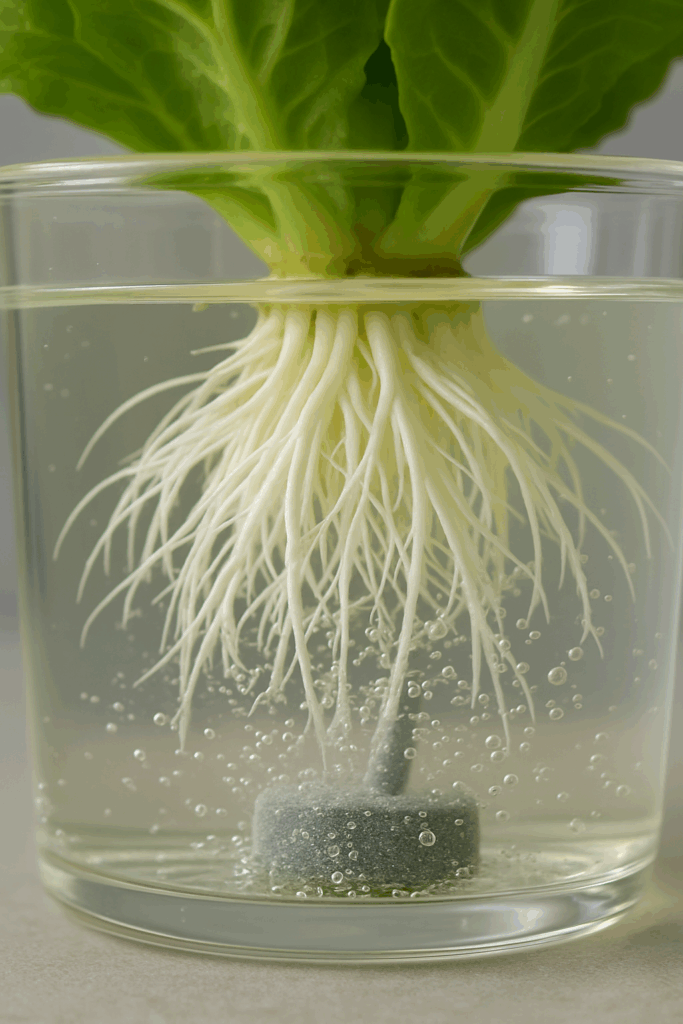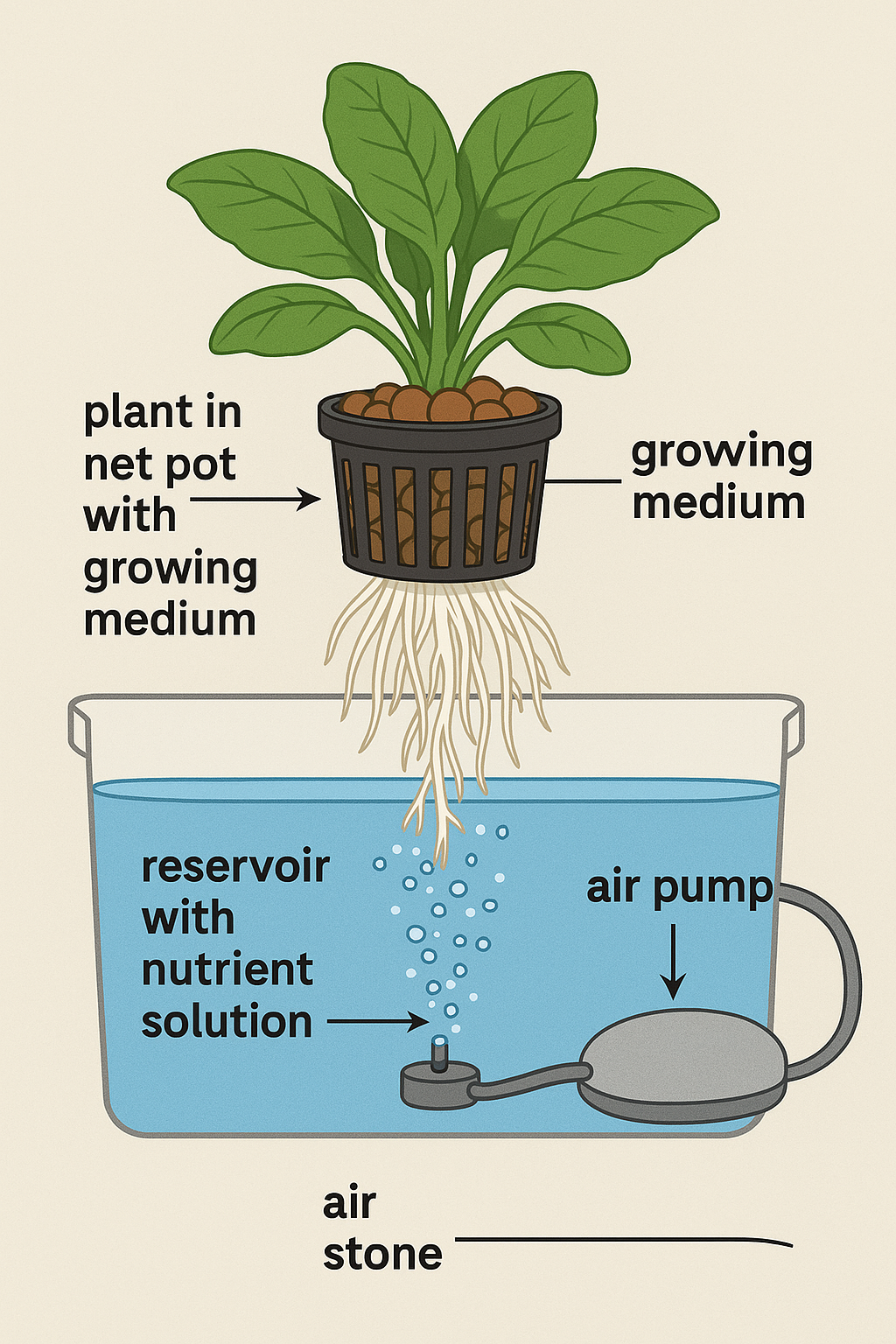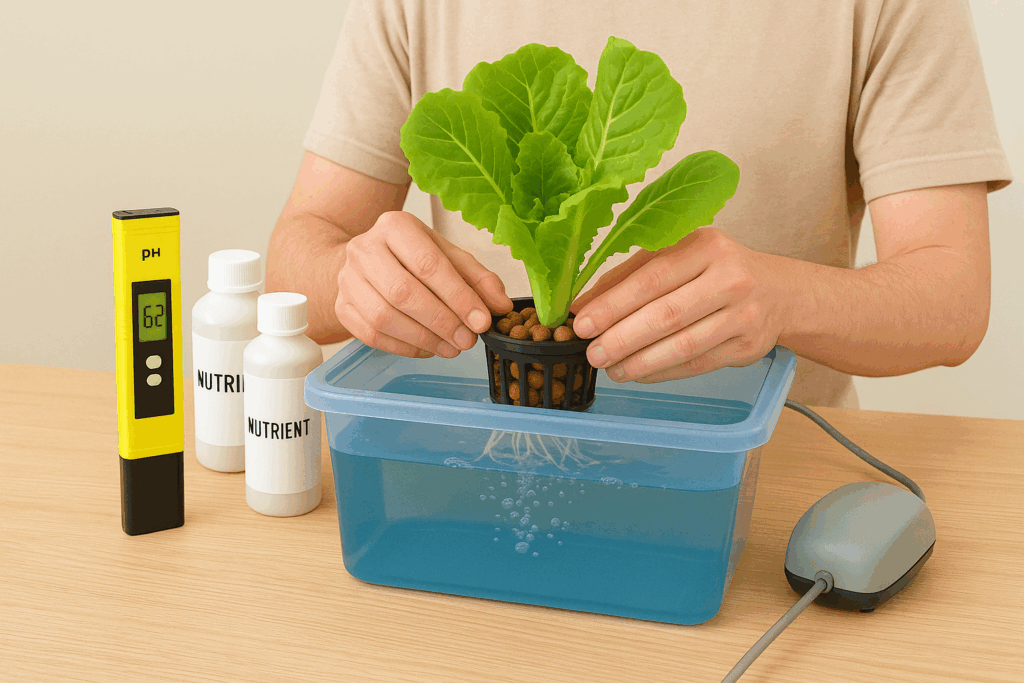Have you ever wondered how plants can grow without soil? Or perhaps you’ve seen those futuristic-looking farms with plants growing in water and thought, “How does that even work?” Welcome to the fascinating world of hydroponics – a revolutionary growing method that’s changing how we think about agriculture.
Whether you’re a complete gardening beginner or an experienced soil grower curious about soilless cultivation, this comprehensive guide will answer all your questions about hydroponics. By the end, you’ll understand exactly what hydroponics is, how it works, and whether it’s right for you.
What is Hydroponics? The Simple Definition
Hydroponics is the practice of growing plants in nutrient-rich water instead of soil. The word comes from two Greek words: “hydro” (water) and “ponos” (labor), literally meaning “water work.”
In hydroponic systems, plants receive all their essential nutrients through a carefully balanced water solution, while their roots are supported by inert growing media like perlite, coconut coir, or specialized foam cubes.

The Science Behind Soilless Growing
How Plants Actually Feed
Here’s a surprising fact that many people don’t realize: plants don’t actually “eat” soil. Instead, they absorb nutrients that are dissolved in water around their roots. Soil simply acts as a storage medium for these nutrients, much like a warehouse storing products.
In traditional gardening, the process works like this:
- Nutrients exist in the soil in various forms
- Water dissolves these nutrients into ions
- Plant roots absorb the dissolved nutrients through their root membranes
- Plants use these nutrients for growth, photosynthesis, and reproduction
Hydroponics eliminates the middleman (soil) and delivers nutrients directly to the roots in their most accessible form.
The 17 Essential Plant Nutrients
All plants require 17 essential elements to thrive:
Macronutrients (needed in large quantities):
- Carbon (C) – from air/CO₂
- Hydrogen (H) – from water
- Oxygen (O) – from air and water
- Nitrogen (N) – for leaf growth and chlorophyll
- Phosphorus (P) – for root development and flowering
- Potassium (K) – for overall plant health and disease resistance
- Calcium (Ca) – for cell wall structure
- Magnesium (Mg) – central atom in chlorophyll
- Sulfur (S) – for protein synthesis
Micronutrients (needed in small quantities):
- Iron (Fe), Manganese (Mn), Zinc (Zn), Copper (Cu), Boron (B), Molybdenum (Mo), Chlorine (Cl), Nickel (Ni)
In hydroponics, we precisely control the concentration of each nutrient, giving plants exactly what they need when they need it.

Brief History: From Ancient Babylon to Modern Farms
Hydroponics isn’t as modern as you might think. The concept dates back thousands of years:
- 600 BC: The Hanging Gardens of Babylon likely used early hydroponic principles
- 1600s: Belgian scientist Jan Baptist van Helmont conducted the first recorded hydroponic experiment
- 1860s: German botanists Julius von Sachs and Wilhelm Knop developed the first nutrient solutions
- 1930s: Dr. William Gericke coined the term “hydroponics” at UC Berkeley
- 1940s: Hydroponics fed Allied troops on barren Pacific islands during WWII
- Today: Commercial hydroponic farms produce millions of tons of food worldwide
How Hydroponics Works: The Core Principles
Principle 1: Direct Nutrient Delivery
Instead of plants searching through soil for nutrients, hydroponic systems deliver a perfectly balanced nutrient solution directly to the root zone. This eliminates the guesswork and competition for resources.
Principle 2: Optimized Oxygen Levels
One of the biggest advantages of hydroponics is superior root oxygenation. In soil, roots can become waterlogged and suffocate. Hydroponic systems actively deliver oxygen to roots through:
- Air pumps and air stones (like aquarium equipment)
- Flowing nutrient solutions that pick up oxygen
- Growing media with excellent drainage and air spaces
Principle 3: Environmental Control
Hydroponic growers can precisely control:
- pH levels (typically 5.5-6.5 for most plants)
- Nutrient concentration (measured as EC or TDS)
- Water temperature (usually 65-75°F)
- Light levels (when growing indoors)
- Humidity and air circulation
Principle 4: Efficient Resource Use
Hydroponic systems recycle nutrients and water, using up to 90% less water than traditional agriculture while often producing higher yields per square foot.
Photo 3 (Diagram-style photo showing the basic components of a simple hydroponic system: reservoir with nutrient solution, air pump with air stone creating bubbles, plant in net pot with growing medium, and labels pointing to each component)
Main Types of Hydroponic Systems
Deep Water Culture (DWC)
Plants sit in net pots with their roots suspended directly in oxygenated nutrient solution. Perfect for beginners due to its simplicity.
Best for: Lettuce, herbs, leafy greens Pros: Simple, low-cost, fast growth Cons: Risk of root rot if oxygen levels drop
Nutrient Film Technique (NFT)
A thin film of nutrient solution continuously flows through channels, feeding plant roots while providing oxygen exposure.
Best for: Small plants with compact root systems Pros: Water-efficient, good oxygenation Cons: Pump failure can kill plants quickly
Ebb and Flow (Flood and Drain)
Growing beds are periodically flooded with nutrient solution, then drained back to a reservoir.
Best for: Variety of plant sizes Pros: Versatile, good for different growth stages Cons: More complex pump timing required
Drip Systems
Nutrient solution is dripped directly onto plant roots or growing medium through emitters.
Best for: Larger plants like tomatoes Pros: Efficient, scalable Cons: Emitters can clog
Wick Systems
Passive system using capillary action to draw nutrients from reservoir to plants through wicks.
Best for: Small herbs, low-maintenance setups Pros: No electricity required Cons: Limited to small plants
Aeroponics
Roots hang in air and are misted with nutrient solution at regular intervals.
Best for: Maximum growth rates Pros: Fastest growth, highest yields Cons: Most complex, highest failure risk
Hydroponics vs. Traditional Soil Growing
Advantages of Hydroponics
Faster Growth Rates Hydroponic plants typically grow 25-50% faster than soil-grown plants because nutrients are immediately available and optimally balanced.
Higher Yields Without competition for nutrients and with optimal growing conditions, plants can focus energy on growth rather than developing extensive root systems to search for food.
Year-Round Growing Indoor hydroponic systems allow continuous production regardless of weather, season, or climate.
Water Conservation Counterintuitively, hydroponics uses significantly less water than traditional farming because the water is recirculated rather than lost to runoff and evaporation.
No Soil-Borne Diseases Eliminates many common plant diseases and pests that live in soil, reducing or eliminating the need for pesticides.
Space Efficiency Hydroponic systems can be stacked vertically and don’t require the spacing needed for root expansion in soil.
Consistent Quality Precise control over growing conditions leads to more uniform, predictable harvests.
Disadvantages of Hydroponics
Higher Initial Costs Setting up a hydroponic system requires more upfront investment than planting in soil.
Technical Knowledge Required Success requires understanding pH, nutrients, and system maintenance.
Electricity Dependence Most systems require pumps, lights, and other electrical equipment.
Ongoing Maintenance Regular monitoring and maintenance of pH, nutrients, and equipment.
Limited Plant Variety Some plants (like large trees) are impractical to grow hydroponically.

Is Hydroponics Right for You?
Perfect Candidates for Hydroponics
Urban Dwellers
- Limited outdoor space
- Want fresh herbs and vegetables year-round
- Interested in modern, efficient growing methods
Control Enthusiasts
- Enjoy optimizing and tweaking systems
- Like precise monitoring and data
- Want predictable, consistent results
Sustainability Advocates
- Want to reduce water usage
- Interested in pesticide-free growing
- Looking to minimize transportation of food
Year-Round Growers
- Live in areas with harsh winters
- Want continuous harvests
- Have indoor growing space
Maybe Consider Soil Instead If You’re…
Budget-Conscious Beginners Traditional soil gardening has lower startup costs and is more forgiving of mistakes.
Hands-Off Gardeners If you prefer low-maintenance growing, soil systems are generally more tolerant of neglect.
Growing Large Plants Trees, large shrubs, and extensive root vegetables are better suited to soil growing.
Off-Grid Growers If electricity isn’t available, passive growing methods or soil may be better options.
Getting Started: Your First Steps
1. Start Small and Simple
Begin with a basic Deep Water Culture (DWC) system and easy plants like lettuce or herbs.
2. Choose the Right Plants
Beginner-friendly options:
- Lettuce (fast-growing, forgiving)
- Basil (aromatic, useful in kitchen)
- Spinach (nutritious, grows quickly)
- Swiss chard (colorful, productive)
Avoid initially:
- Tomatoes (complex nutrient needs)
- Root vegetables (need deep systems)
- Large plants (require advanced support)
3. Invest in Basic Testing Equipment
- pH testing kit or digital meter
- EC/TDS meter for nutrient concentration
- Thermometer for water temperature
4. Learn the Fundamentals
Master these core concepts before expanding:
- pH management (keeping it in optimal range)
- Nutrient mixing and concentration
- Recognizing healthy vs. stressed plants
- Basic troubleshooting
5. Start with Quality Nutrients
Don’t skimp on hydroponic nutrients. Good commercial formulations take the guesswork out of nutrition and improve your chances of success.

Common Beginner Mistakes (And How to Avoid Them)
Mistake 1: Overcomplicating the First System
Solution: Start with a simple DWC setup. Master the basics before moving to complex automated systems.
Mistake 2: Ignoring pH
Solution: Check pH weekly and adjust as needed. Most plants prefer 5.5-6.5 pH.
Mistake 3: Over-Fertilizing
Solution: Follow nutrient manufacturer guidelines. Start with lower concentrations and increase gradually.
Mistake 4: Poor Lighting (for indoor systems)
Solution: Invest in proper grow lights. Plants need adequate light intensity and duration.
Mistake 5: Inconsistent Monitoring
Solution: Establish a routine for checking water levels, pH, and plant health.
The Future of Hydroponics
Emerging Trends
Vertical Farming Multi-story growing facilities maximize production in minimal space, perfect for urban agriculture.
AI and Automation Smart systems monitor and adjust growing conditions automatically, reducing labor and improving consistency.
Sustainable Energy Integration Solar-powered systems and energy-efficient LED lighting make hydroponics more environmentally friendly.
Consumer Adoption Home hydroponic systems are becoming more affordable and user-friendly, bringing fresh food production to kitchen counters.
Global Impact
Hydroponics is helping address major global challenges:
- Food Security: Growing food in areas with poor soil or harsh climates
- Water Scarcity: Reducing agricultural water usage in drought-prone regions
- Urbanization: Bringing food production closer to urban populations
- Climate Change: Providing climate-controlled growing environments
Your Next Steps in Hydroponic Growing
Immediate Actions
- Read our system building guides to choose your first setup
- Browse our crop guides to select your first plants
- Join online hydroponic communities for support and inspiration
Short-Term Goals (First Month)
- Set up your first simple system
- Successfully grow your first hydroponic plant
- Learn to maintain proper pH and nutrients
Long-Term Vision (First Year)
- Expand to multiple systems or crops
- Experiment with different growing techniques
- Consider specializing in particular plants or methods
Conclusion: Welcome to the Hydroponic Revolution
Hydroponics represents more than just a different way to grow plants – it’s a sustainable, efficient approach to food production that can fit into any lifestyle. Whether you’re growing fresh herbs on your kitchen counter or planning a backyard vegetable operation, hydroponic principles can help you grow healthier plants with less water, fewer chemicals, and greater control.
The journey from complete beginner to confident hydroponic grower is incredibly rewarding. Every plant you successfully grow teaches you something new, and every harvest brings the satisfaction of fresh, homegrown food.
Ready to start your hydroponic journey? Check out our guide to building your first DWC system or browse our beginner-friendly plant guides. Have questions? Don’t hesitate to contact us – we love helping new growers succeed!
This article is part of our Hydroponics Basics series. New to our site? Start with our About page to learn more about our mission to make hydroponic growing accessible to everyone.